Earlier this year I celebrated the fiftieth anniversary of the Moon landing of Apollo 11 by publishing a series of eight articles about the ‘Space Race’ of the 1960s. I enjoyed that task so much that I decided to write a few more posts about some of the other cool technologies that made the news during that decade; I hope you’ve been enjoying them.
In this post I’ll be talking about lasers, those intense beams of light that can not only cut through steel but also read the data off of DVDs, print our documents, are used to measure distances with extreme accuracy and are even used in medical surgery, especially eye surgery. Most people know that the word LASER is an acronym standing for ‘Light Amplification through Simulated Emission of Radiation’ and many have heard that the property that makes a laser beam different is something called ‘coherence’.
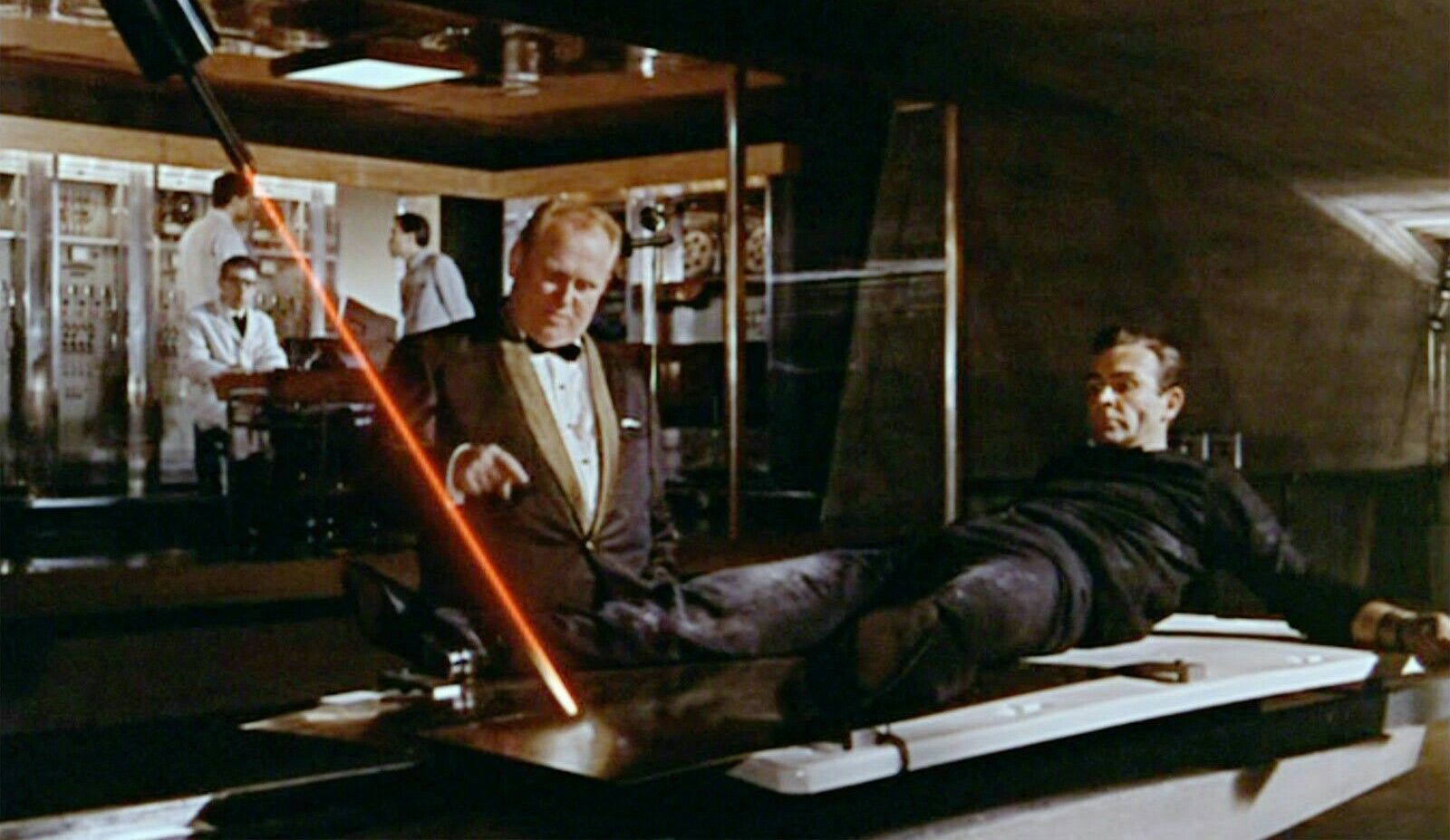
This coherence actually comes in two forms, spatial and temporal. In spatial coherence the photons, the particles of light are emitted in very precisely the same direction resulting in the very narrow beam that lasers are best known for. Temporal coherence means that those photons all have very precisely the same frequency. It also allows laser pulses to be very accurately timed, On and Off along with the amount of time a pulse lasts.
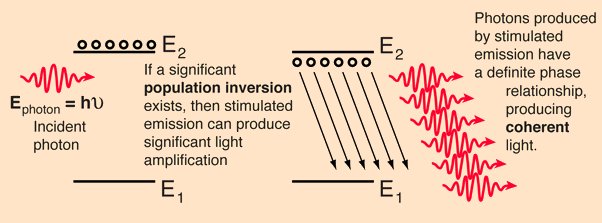
The phenomenon that produces Laser light is a purely quantum mechanical effect that was first recognized by Albert Einstein in 1917. Einstein was working on the problem of how an atom with its electrons in the minimum energy or ‘ground state’ can be excited into higher energy state by absorbing a photon of just the right energy. At the same time an atom that is in an excited state can also decay back into its ground state by emitting a photon with the exact same energy.
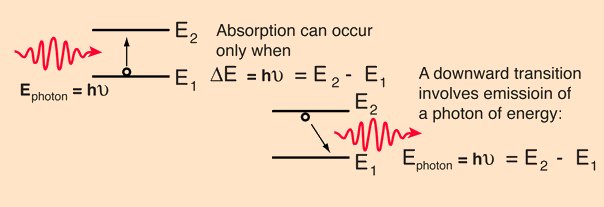
As he calculated the probability per unit time of that decay process occurring Einstein also noticed that the probability increased a lot if another photon of just the right energy happened to be near the excited atom. The photon stimulated the decay of the atom and the emission of a second photon identical to the first!
For the next several decades simulated emission remained nothing more than an interesting possibility. It wasn’t until 1928 that Rudolf W. Ladenberg even confirmed its existence but the idea of a practical usage of the phenomenon seemed almost impossible. That would require a material that had the majority of its atoms in the excited state, at condition called a population inversion and which was thought to never occur in nature.
It wasn’t until 1951 that Joseph Weber suggested that a microwave cavity could be used to produce a population inversion, by confining the atoms and pumping in energy the atoms could be ‘supercharged’. A small microwave signal could then simulate all of the excited atoms to decay greatly amplifying that small initial signal. The device was first build two years later and called a Maser for Microwave Amplification through Simulated Emission of Radiation. Masers are still used today by radio astronomers to amplify the extremely weak signals they study.
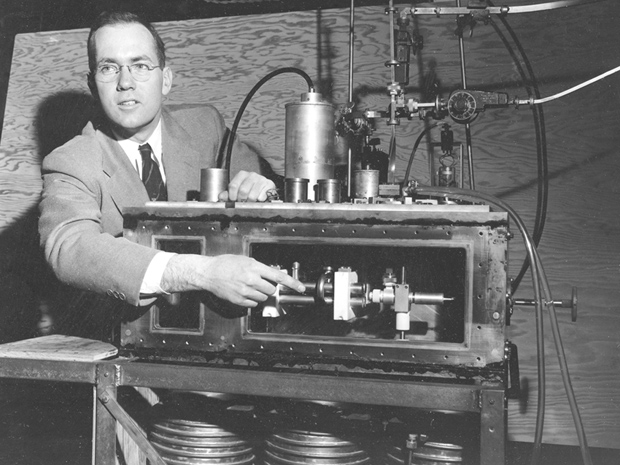
With the Maser showing how it could be done the hunt was on for a material that could create a population inversion at optical wavelengths. As often happens nowadays there were several teams of researchers who came close, Bell Labs and Columbia University among others. It was Theodore H. Maiman at Hughes Research Laboratories who produced the first laser by employing a synthetic ruby crystal pumped by a flashlamp to produce a pulse of red laser light at a wavelength of 694 nanometers.
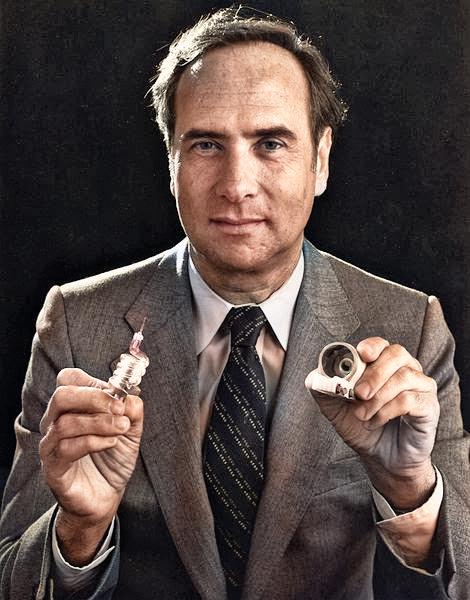
It wasn’t long before continuous lasers were also developed using helium or neon as the lasing material. Then in 1970 Zhores Alferov in the USSR along with Izuo Hayashi and Morton Panish at Bell Labs demonstrated that semiconductor material could also be employed as a lasing material. Before long lasers were being manufactured cheaply and in mass quantities.
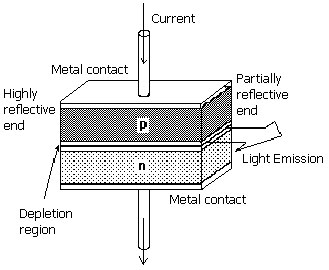
Today lasers are everywhere; they are in the checkout scanners at supermarkets, our DVD and CD players and laser printers and if you get your TV signal on optical fiber it’s a laser that transmits the signal going through the fiber. Research into new types of lasers is ongoing and laser manufacturing is a big industry. The non-semiconductor laser industry is today valued at more than $2 billion dollars while semiconductor lasers total more than $3 billion.
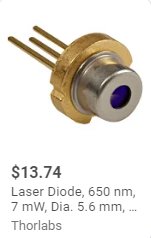
Lasers seemed almost magical back in the 1960s, a symbol of how far our science and technology had come in its control of nature. Today we pretty much take them for granted. That’s progress I suppose.
